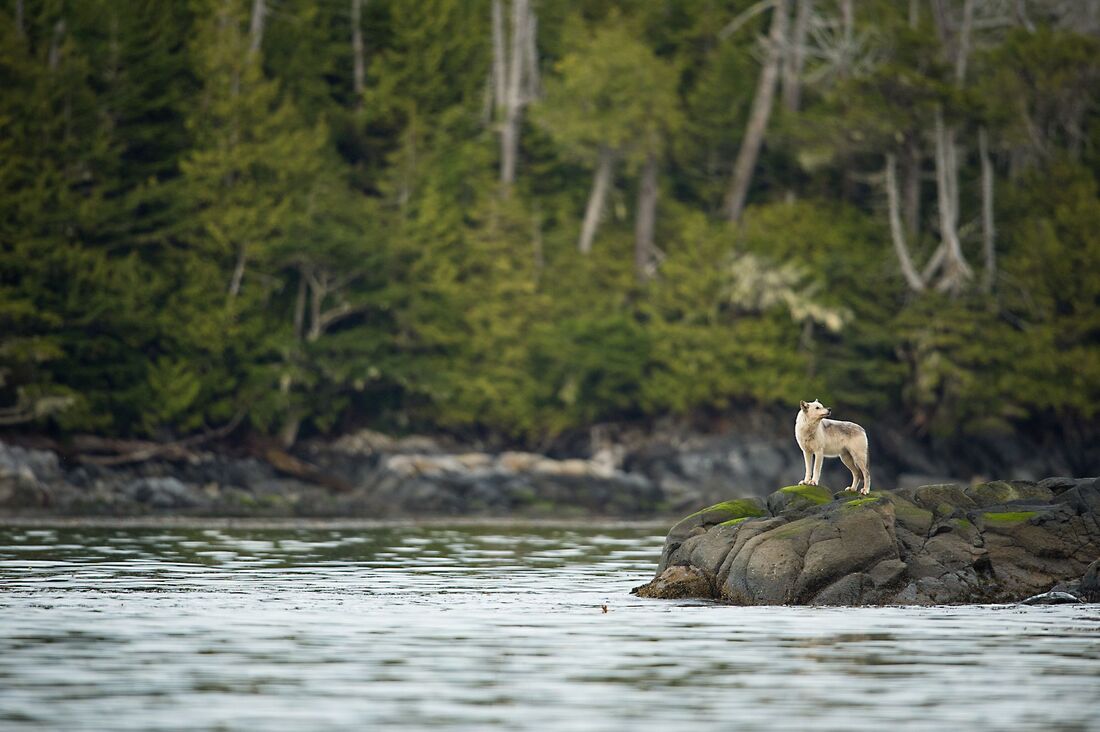|
Yellowstone National Park is roughly 2,000 miles away from the Middle Susquehanna Watershed, and we have no wolves in central/northeast Pennsylvania -- but the wolf situation at Yellowstone can be a great reminder of how intertwined our natural ecosystems can be. In a nutshell, the reintroduction of wolves into the park in 1995 had such a huge ripple effect, it actually changed the route of rivers and impacted even the tiniest of species within the greater Yellowstone food web.
After 70 years of a wolf-free ecosystem within the 2,219,789-acre park, experts wanted to re-introduce the predator in the mid-1990s. The news caused quite a stir at the time as many feared the wolves would decimate the deer, elk and other prey animals throughout the 63-mile by 54-mile terrain. But the scientists and other wildlife officials proceeded with the plan, capturing 14 wolves in January 1995 from Jasper National Park in Alberta, Canada, and releasing them into Yellowstone after a three-month acclimation period. A year later, 17 additional Canadian wolves were released into Yellowstone. These were the last wolves relocated into the park within the past 25 years. Natural reproduction and survival patterns took things from there, with as many as 171 wolves prowling the park as recently as 2007. In 2009, the wolves in that part of the country were officially removed from the endangered species list and since then, thanks to human hunting efforts, the population has fluctuated to a more sustainable level. The ripple effect of the reintroduction did indeed have a massive effect on all levels of the ecosystem. Of course, the wolves reduced the local deer herd, but more importantly, they changed the behavior of the deer and elk populations. They began to avoid certain areas where the wolves could more easily attack them, such as valleys and other low-lying regions. This allowed the plant life to explode, and quickly forests of Aspen and other species were sprouting. This attracted more varieties of birds and other wildlife. Beavers, for example, saw an exponential growth as more and more willow was left ungrazed by elk. The additional plant life helped to reduce erosion and, with the beaver dams, started altering the course of rivers and other waterways. This created new pond and marsh habitats for moose, otters, mink, wading birds, waterfowl, fish, amphibians and even the tiniest macro-invertebrates and other simple organisms. The carcasses left behind by wolf kills created additional scavenging opportunities, and a population boom, for ravens, wolverines, bald eagles, golden eagles, grizzly bears, black bears, jays, magpies, martens and coyotes. More plant life and better habitat drew more rabbits, mice and other critters that, in turn, helped increase hawk, fox and badger numbers while also impacting plant species and other creatures connected to the natural resources. There are no plans to introduce wolves anywhere near the Middle Susquehanna Watershed, but the top-down impact of an apex predator within an ecosystem is an important one to understand. Why? Because we are apex predators. What we do impacts our resources in ways we typically never fully see or understand, many times until it is too late. If wolves can completely overhaul Yellowstone by simply hunting and instinctively being wolves, imagine our impact via housing developments, road projects and gas lines. We use herbicides, pesticides and other chemicals. Plastic proliferates nearly every corner of our existence, including our waterways as a recent Susquehanna University study highlighted. Some of the negative ripple effect we have on our watershed is unavoidable, but there are ways to minimize the impact and a responsibility to change the aspects over which we have control. Recycle whenever possible. Develop a Leave No Trace mindset not just while hiking and camping, but in everyday activities. Take time to get outdoors and reconnect with nature. Rediscover the wonder and re-experience the therapeutic power of a life less wired. What things are you doing to make a difference for our natural resources? Share them in the comments below, or email Middle Susquehanna Riverkeeper John Zaktansky at [email protected]
2 Comments
Leave a Reply. |
AuthorsRiverkeeper John Zaktansky is an award-winning journalist and avid promoter of the outdoors who loves camping, kayaking, fishing and hunting with the family. Archives
July 2024
Topics |

 RSS Feed
RSS Feed